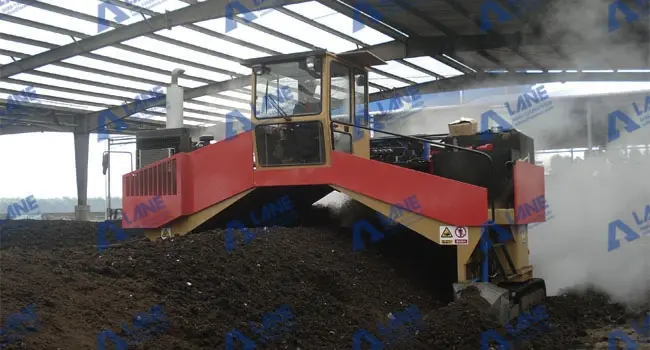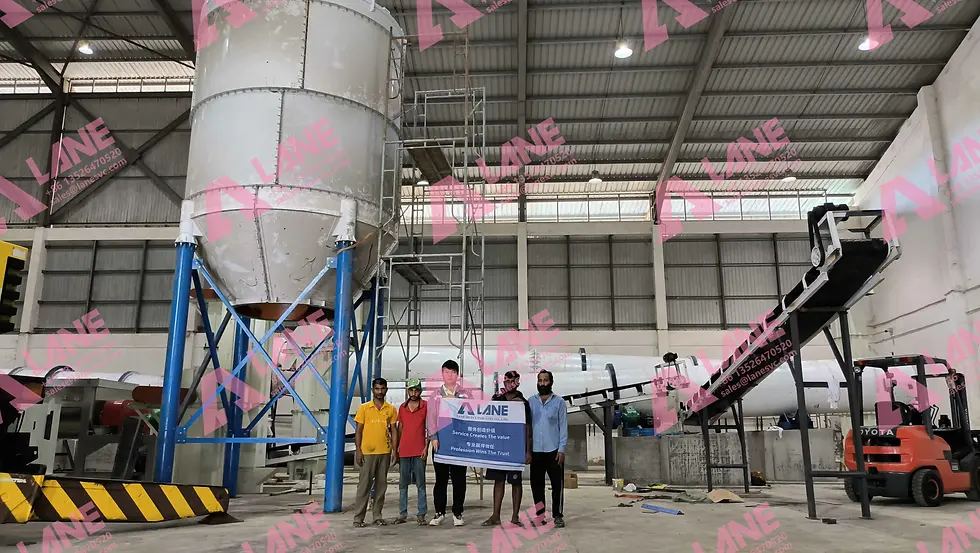Hydraulic Crawler Type Compost Turner – Driving the Future of Efficient Composting
- Nancy Ju
- Aug 4
- 3 min read
Updated: Aug 5
Rethinking Modern Composting
In the organic waste recycling industry, efficiency is everything. Time, labor, and space are often the biggest cost factors. The hydraulic crawler type compost turner addresses these challenges head-on, offering an advanced solution for transforming raw waste into premium organic fertilizer faster than ever before.
Unlike fixed-track or manual systems, the crawler design gives the machine unmatched maneuverability, allowing it to operate on soft soil, gravel, or even muddy ground without getting stuck. The hydraulic lifting drum penetrates deep into the compost pile, ensuring oxygen reaches every layer.
Why Crawler Technology Matters
The crawler system isn’t just about mobility—it’s about stability and productivity. Compost piles can be heavy, uneven, and moisture-rich. The hydraulic crawler type compost turner maintains balance, even under heavy load, reducing downtime and mechanical strain.
This technology also allows for consistent turning depth, which means uniform fermentation. The result? Higher microbial activity, faster decomposition, and compost that meets commercial-grade standards.
Inside the Hydraulic Crawler Type Compost Turner
Component | Function |
Crawler Track Drive | Provides mobility across varied terrain. |
Hydraulic Drum Lift | Ensures deep, even turning for optimal aeration. |
Control System | Adjusts drum speed and direction for different materials. |
Wear-Resistant Blades | Withstands high moisture and abrasive materials. |
Fuel-Efficient Engine | Keeps operational costs low without compromising power. |

The Composting Process – Step by Step
Producing high-quality compost with a hydraulic crawler type compost turner follows a carefully managed sequence. Using the right equipment at each stage ensures optimal fermentation, nutrient preservation, and faster processing.
1. Material Collection & Pre-Treatment
Raw materials such as livestock manure, crop residues, and food waste are collected and prepared. Oversized debris like stones or plastics are removed using a trommel screen machine. In some facilities, a semi-wet material crusher is used to break down clumps, ensuring a uniform particle size for better fermentation.
2. Windrow Formation
The prepared organic materials are stacked into long windrows—typically 1.5 to 3.5 meters high—depending on production scale and machine capacity. This arrangement provides maximum surface area for aeration.
3. First Turning – Initiating Aeration
The hydraulic crawler type compost turner moves along the windrow, using its hydraulically driven turning drum to mix and aerate the compost. This introduces oxygen deep into the pile, activates microbial activity, and ensures even temperature distribution. Some models are fitted with a water spray system to adjust moisture levels during turning.
4. Moisture and Temperature Management
During fermentation, maintaining moisture between 50–60% is essential. The hydraulic crawler type compost turner can integrate moisture sensors to guide water addition. Temperature probes are also used to track internal heat—ideally kept between 55–65°C to kill pathogens and weed seeds.
5. Multiple Turning Cycles
Over the course of 20–30 days, the compost is turned several times. Each pass with the hydraulic crawler type compost turner ensures a fresh oxygen supply, consistent microbial breakdown, and reduced odor. For larger-scale operations, remote control crawler compost turners can be used to improve safety and efficiency.
6. Curing Stage
Once active composting is complete, the material is left to cure for another 1–2 weeks. This stabilizes the compost, allowing microbial activity to slow naturally. During this stage, occasional turning may be done with the same hydraulic crawler type compost turner to prevent compaction.
7. Screening & Final Processing
The matured compost is screened with a rotary drum screener or vibrating screener to remove oversized particles. At this stage, additional processing such as granulation using a double roller granulator or pelletizing machine can be performed if producing market-ready organic fertilizer pellets.
8. Packaging & Storage
For commercial sale, compost is packed using an automatic fertilizer packaging machine. Proper packaging preserves nutrient value, prevents moisture reabsorption, and ensures easy transport.
By combining the hydraulic crawler type compost turner with these complementary machines, composting becomes faster, cleaner, and more efficient—delivering a premium organic fertilizer ready for agricultural use.

Why LANE’s Machines Stand Out
LANE’s hydraulic crawler type compost turner for organic fertilizer production is engineered for durability and ease of use:
Heavy-duty steel frame with anti-corrosion treatment.
Optional remote control for safer operation.
Custom drum widths for small, medium, or industrial-scale composting.
Integration with complete fertilizer production lines for seamless workflow.
After-sales support and spare parts supply in over 20 countries.

The hydraulic crawler type compost turner isn’t just another piece of farm equipment—it’s a strategic investment in sustainable agriculture and waste management. For farms, municipalities, and commercial compost producers, it offers a direct path to faster production cycles, better product quality, and lower costs. With LANE’s expertise, it becomes more than a machine—it becomes the engine that powers your composting success.
Email: sales@lanesvc.com
Contact number: +86 13526470520
Whatsapp: +86 13526470520





Comments